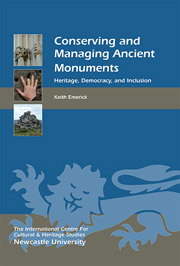Book contents
- Frontmatter
- Contents
- List of Illustrations
- Acknowledgments
- List of Abbreviations
- Introduction
- 1 The Restoration of Hellifield Peel and the Heritage Debate
- 2 The Origins of the Conservation of Ancient Monuments and the Beginnings of State Control in the United Kingdom
- 3 Practice Perfected: the Ancient Monuments Act of 1913 and the Consolidation of State Preservation Practice
- 4 British Conservation Practice in Cyprus, 1878 to 1939: a Case Study
- 5 Current Directions in England: the Emergence of Cultural Heritage Management and the Use of Conventions, Charters and Principles
- 6 Putting Theory into Practice
- 7 Conclusion: Ending the Tyranny of Ruskin and Morris?
- Appendices
- Bibliography and References
- Index
3 - Practice Perfected: the Ancient Monuments Act of 1913 and the Consolidation of State Preservation Practice
Published online by Cambridge University Press: 05 August 2014
- Frontmatter
- Contents
- List of Illustrations
- Acknowledgments
- List of Abbreviations
- Introduction
- 1 The Restoration of Hellifield Peel and the Heritage Debate
- 2 The Origins of the Conservation of Ancient Monuments and the Beginnings of State Control in the United Kingdom
- 3 Practice Perfected: the Ancient Monuments Act of 1913 and the Consolidation of State Preservation Practice
- 4 British Conservation Practice in Cyprus, 1878 to 1939: a Case Study
- 5 Current Directions in England: the Emergence of Cultural Heritage Management and the Use of Conventions, Charters and Principles
- 6 Putting Theory into Practice
- 7 Conclusion: Ending the Tyranny of Ruskin and Morris?
- Appendices
- Bibliography and References
- Index
Summary
Have you heard that HMOW have started in on Whitby to do their damnedest to give us another ‘frozen ruin’ from the Government cold storage? Help!
(SPAB File 1922)I hold it for one of the most encouraging signs of our time that the practice of setting up non-official advisory bodies to work with officials has of late shown so large a development. We are really in a way not only to make use of the large amount of skill and knowledge which exists, but to give it a status and actual executive power which must raise our standards in the country generally in a way which mere bureaucracy could never do.
(Peers 1928, 74)Introduction
The suggestion in Chapter 1 was that the trajectory of ancient monument conservation in the United Kingdom could be characterised as three distinct periods: a period when monuments changed from being picturesque and romantic features to objects of scientific enquiry; a period when they were ‘frozen’; and the current period, when change and conservation are seen as compatible. Following discussion in Chapter 2 of the evolution of conservation principles and the creation of a professional, full-time corps of specialists at the Office of Works, this chapter will consider and discuss the circumstances surrounding the introduction of the Ancient Monuments Consolidation and Amendment Act of 1913 (AMCAA 1913) and examine the ways in which this legislation and resulting practice solidified those evolving principles into a particular vision of the historic environment and ancient monument work.
Information
- Type
- Chapter
- Information
- Conserving and Managing Ancient MonumentsHeritage, Democracy, and Inclusion, pp. 71 - 114Publisher: Boydell & BrewerPrint publication year: 2014
